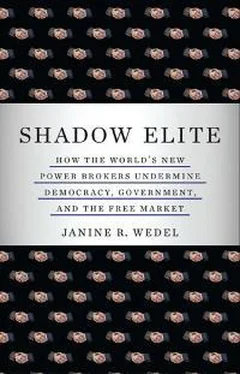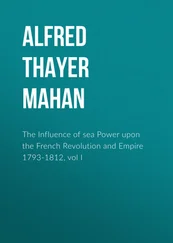Team B had other ways of persisting, as embodied in key players, in the modus operandi of the Neocon core and, more generally, as a model for doing business. As journalist James Mann, author of an authoritative history of George W. Bush’s war cabinet, has written, after Team B, “whenever members of Congress believed that the CIA was minimizing the seriousness of a foreign policy problem, there were calls for a Team B to review the intelligence and make its own independent evaluation.” 44
Indeed, constructing views diverging from the intelligence community—and employing means that would see them adopted as policy—would be a perennial project of the Neocon core.
Unauthorized, Yet Somehow Authorized
Whereas Paul Wolfowitz et al. had created alternative intelligence assessments via Team B a decade earlier, the players in the Iran-Contra affair created alternative governing structures and processes, this time to circumvent not only the standard bureaucracy but also the checks and balances of Congress, which had outlawed their activity. Simultaneously they were also enjoying the tacit approval of the president of the United States, Ronald Reagan, who had secretly blessed the operations. 45These structures and processes, although substantially embedded within government bodies and often carried out by officials, were off the books: They skirted bureaucratic and chain-of-command structures and enabled the players to carry out illegal operations in secret, thereby derailing official U.S. foreign policy. Thus was policy privatized and relations with certain countries relegated to might-be-official, might-not-be-official diplomacy carried out by “private operatives.” 46
My purpose here is not to rehearse the details of Iran-Contra, but to highlight the overall modus operandi that made it successful, as well the roles of those who became part of the Neocon core. For the core would build on those means; indeed, the modus operandi employed by the protagonists seemed a portent of things to come.
Many players other than those mentioned here took part in the events that led to the scandal. The names we know best—Oliver North, the telegenic former Marine, Vietnam veteran, and self-styled patriot made famous during congressional hearings; Richard Secord, a retired Air Force major general who had met North in the military; and Albert Hakim, an arms dealer—are not associated with the Neocon core. But certain of its members, including Elliott Abrams and Michael Ledeen, were centrally involved in the affair.
The Iran-Contra players arrived onto the world scene as the Cold War was about to draw down. The basic contours of the affair (in reality, two separate operations whose principal operatives and funding sources became intertwined), which burst into the headlines of mainstream media in 1986, were as follows: Operatives in and around the fervently anticommunist Reagan executive branch secretly sold arms to Iran. Iran was not only an enemy of the United States but also was complicit in the five-year detention of American hostages in Iran after the nation’s 1979 revolution. In return for the arms, the players got two things: an assurance that Iran would influence the Lebanese terrorist group Hezbollah to release the American hostages they were holding, and revenue to support their agenda half a world away. With the profits from the arms sales, the operatives underwrote the Contras, the anti-Sandinista Nicaraguan rebel group to which aid had been prohibited by Congress. These activities were derailed after a plane crash in Central America involving a lone survivor and CIA operative (and a news article published a month later detailing President Reagan’s approval of the sale of missiles to Iran) led reporters to a trail of clandestine activities. 47
To achieve their own agendas—a combination of ideological, foreign policy, and personal financial goals—players in the “Enterprise,” as they referred to their operation, expertly evaded scrutiny as they functioned counter to many U.S. laws and policies. 48North was at the center of the Enterprise, which connected seemingly disparate efforts, intermediaries, finances, companies, and otherwise unrelated people both from within and outside government. It masked players’ unofficial and often illegal activities in titles that could not begin to convey what they were actually doing. A mere National Security Council (NSC) staffer on the organizational charts, North had direct access to CIA Director William Casey. Further circumventing the chain of command, North worked directly with NSC Advisor Robert McFarlane, and, later, NSC Deputy Director John Poindexter when he replaced McFarlane. North’s unique and seemingly indispensable role in the NSC was underscored by the direct access he was given to both men. 49
Key functions in Iran-Contra were performed not only by operatives in the bureaucracy who flouted the organizational structure, but also by operatives outside it. Consider the following job sketch:
• Secretary of state of the United States long enough to negotiate a clandestine deal.
• No confirmation necessary.
• No responsibility or answerability possible because no one outside a secret circle knows there is an acting secretary.
This unwritten position description belonged to Albert Hakim, the Iranian-born, California-based arms merchant eager for U.S. government contracts, who was a friend and business associate of Richard Secord. The United States had no diplomatic relations with Iran. Yet Hakim (sometimes together with McFarlane, Secord, or others) made trans-Atlantic trips in which, presenting themselves as U.S. envoys, he and they met with Iranians and arms dealers to discuss weapons sales and the possible release of the American hostages. This diplomacy was, of course, unofficial, as was the maze of Swiss bank accounts set up by Hakim and Secord in their own names to receive, transfer, and make payments on behalf of the Contras, Israelis, and Iranians. (Hakim personally received more than $2 million as a result of the operation.) North, who was himself unauthorized (yet somehow authorized) to do so, dispatched Hakim to meet with an Iranian delegation in Frankfurt to work out the details of the clandestine agreement to sell weapons to Iran. Hakim negotiated the deal with Iran with not a single real U.S. official present. Hakim later told Senate investigators, who suggested that he had played secretary of state, that his role was better than the actual secretary because he did not have to get confirmed by Congress. And, he added insightfully, “I can achieve more, too.” 50
Two members of the Neocon core, Elliott Abrams and Michael Ledeen, were also high achievers. Abrams blended a variety of roles—official and legal, unofficial and not-so-legal, and public relations—in the service of Iran-Contra. While assistant secretary of state for Inter-American Affairs beginning in 1985, Abrams was integral to Oliver North’s Central American activities. It was not just that he knew about the illegal work and allowed it to go on. Abrams, together with the heads of crucial CIA operations, sanctioned blending legal U.S. humanitarian aid to the Contras with illegal shipments of arms and supplies. He encouraged U.S. officials to work in their official capacities on behalf of the Enterprise via a high-level interagency working group on Latin American policy. In yet other important roles, in 1985 Abrams became the administration’s chief advocate on Capitol Hill to lift the ban on aid to the Contras. He also helped North raise private funds for the rebel group, meeting with potential underwriters of the cause as they toured the White House and were briefed by North and granted photo opportunities with President Reagan. 51
Ledeen, for his part, would shine as a budding specialist in might-be-official, might-be-unofficial diplomacy. After working for both State and Defense in the early 1980s, he consulted for NSC Advisor McFarlane from 1984 to 1985. At the NSC, Ledeen briefed McFarlane on Defense Intelligence Agency reports. He also was assigned to work with North on counterterrorism activities. According to Independent Counsel Lawrence Walsh, appointed by the attorney general to investigate the Iran-Contra affair, Ledeen “persuaded McFarlane to permit him to approach [Israeli Prime Minister Shimon] Peres, ostensibly to take advantage of Israeli intelligence in formulating a policy for dealing with Iran after [Ayatollah] Khomeini’s death.” In 1985, on an official trip to Israel, Ledeen and Peres discussed potential weapons sales to Iran. According to Walsh, Ledeen acted as a “conduit for information between Israeli officials, Israeli and Iranian arms brokers, and the NSC staff.” As the unofficial intermediary between McFarlane and the Israelis, as well as between the Israelis and the Middle Eastern arms merchants, Ledeen carried out covert activities that both excluded the intelligence community and the State Department and engaged foreign operatives to conduct might-be-authorized, might-not-be-authorized U.S. relations with foreign nations. These foreign operatives, including Manucher Ghorbanifar, a secret police official under the Shah of Iran turned arms dealer, and Adnan Khashoggi, a Saudi investor, were key brokers of arms sales and relations with Iran. According to Independent Counsel Walsh, Ledeen did not inform North of all his activities with leaders in the Middle East—a breach even of the unofficial chain of command. That is because Ledeen, Walsh speculates, was making money from weapons sales. Many questions remain. As Walsh wonders: “Had he [Ledeen] simply been an amateur welcoming a chance to help formulate presidential policy, while the professional diplomats were excluded from the process? Had he been a cat’s paw for McFarlane’s ambition for a historic breakthrough to Iran? Had he been paid off by Ghorbanifar or the Israeli arms merchants?” 52
Читать дальше












